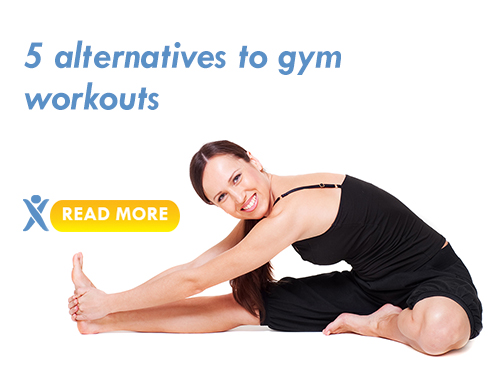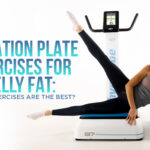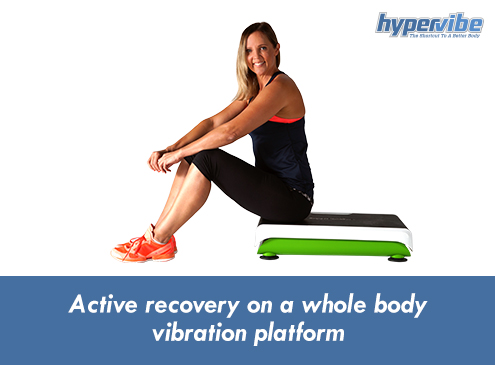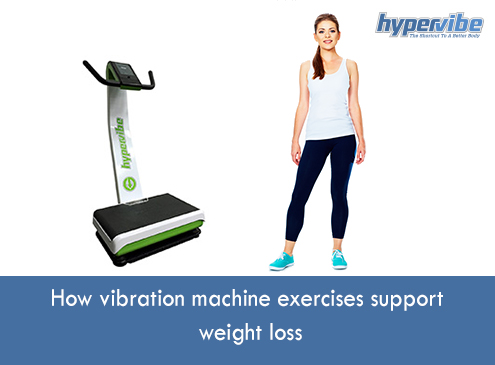5 Alternatives to Gym Workouts
With our busy lifestyles, making time for a workout can be challenging even for those who are willing to put in the effort for improving their health and physical appearance. If you live next to a gym, it’s easier to stick with regular workouts, but if you have to drive 30 minutes to exercise, and then go straight to the office, then it’s understandable if you prefer to skip the gym workouts.
Still, this doesn’t mean you have to abandon exercise for good. There are plenty of alternatives out there, some of them involving nothing but your body weight, and others that can be done either indoor or outdoor. Take a look at our recommendations below and feel free to add other suggestions.
1. Swimming
If you prefer outdoor workouts and have access to a public or private pool, then swimming is an excellent choice for strengthening your body and burning some calories. 30 minutes of swimming can burn around 200 calories while allowing you to work your core muscles, shoulders, arms, and legs.
Depending on the style you choose, swimming can be more or less demanding, so it can be a great way to recover after an injury or to exercise if you suffer from arthritis or other conditions that affect your bones, joints or muscles.
Swimming in a low-impact workout that still works the muscles without putting stress on your joints, so it’s ideal even for people who have excess pounds or are more prone to injuries. It helps increase bone and muscle density, as well as in improving flexibility, coordination, and agility.
2. Home / outdoor bodyweight exercises
A free alternative to gym workouts is represented by bodyweight exercises, which can be done either at home or outdoor, depending on preferences. For this, you won’t need to hire a trainer but it might be useful to watch some DVDs or online videos before starting a routine, just to make sure your form is good.
Maintaining good posture during bodyweight training is essential not only for avoiding injuries but also for efficiently engaging the muscles and making the most of your workout. Sit-ups, jumping jacks, squats, lunges, planks, crunches, and any other exercise that requires only your body weight can be included in the routine.
The challenging part here is to create a circuit that targets most of the major muscle groups and works your problem area more profoundly, to help with improving your body shape and tone. Aim for a combination of strength and cardio moves to maximize energy expenditure and speed up weight loss.
3. Wall / mountain climbing
A challenging and demanding sport, wall climbing can be fun and dangerous at the same time, and it’s definitely a great way to strengthen all your muscles. Not only it requires muscle strength and coordination, but it’s also an effective cardio workout, so don’t be surprised if you sweat as if you were doing an intense cardio workout.
This form of training does require special equipment and you need either a public climbing wall or a nice place to camp and go mountain climbing. But regardless of your choice, this form of physical activity will keep you entertained, as it’s far from being boring and requires your concentration 100% of the time.
Climbing is great for losing weight, getting stronger muscles, and shaping your body, as it engages multiple muscle groups at once. Just make sure you take some classes before going outdoor to explore the mountains. Public walls that are designed for this purpose are a great way to start testing your climbing abilities.
4. Dancing
You don’t even need a partner for this one, although it may be more fun to burn calories while dancing with a friend. The great part about dancing is that even if it doesn’t look or feel like a workout, it can burn a lot of energy and give you a stronger core, nice sculpted legs, firmer glutes, and a thinner upper body.
Dancing isn’t the best for shaping the problem body areas and building muscle mass, but it’s excellent for burning calories and losing fat from all over the body, as an hour of dancing can burn up to 500-600 calories. Turn the music on and experience it with different styles – the key is to be consistent and exercise regularly.
5. Whole body vibration
Vibration training, unlike other options here, takes only 10 minutes a day, and can work your entire body while improving your circulation and lymphatic drainage. You stand or sit on a platform that vibrates and the energy waves sent through your body cause the muscles to contract fast, so you can get a thorough workout without having to lift weights.
Depending on the intensity and frequency used, and on the G-force (gravitational force) exerted by the machine, you can use whole body vibration for recovery and rehabilitation, for toning your body and reducing cellulite, for massaging painful muscles and swollen legs or for strengthening your body and getting a leaner physique.
This form of workout can be done at home as it is safe and low-impact, so even people with hip surgery, osteoporosis, or overweight user can do it. However, for home WBV workouts, you will need to invest in a vibration platform that is qualitative and able to deliver the optimum parameters for an intense workout or a relaxing massage session.












